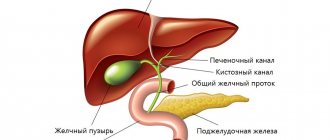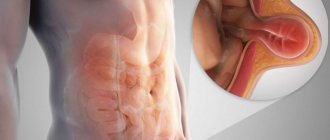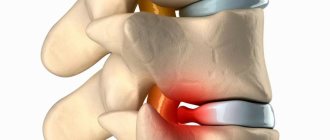Many urological and gynecological diseases in the initial stage proceed slowly and cause almost no concern to the patient. Among the main signs that are not usually paid attention to, swelling of the limbs and face comes first. This symptom is often not associated with pain, so it is unfairly ignored, but in vain!
What is edema and how does it form?
The content of the article
Edema is the swelling of tissue caused by excess fluid, which for various reasons has nowhere to go. Although swelling can occur on any part of the body, the abdominal area is often swollen, but the problem is especially noticeable under the eyes, on the arms, and in the ankles of the feet.
Swelling occurs when small blood vessels become leaky and leak fluid into nearby tissue. Excess fluid accumulates, which leads to swelling of the body area. If the swelling is concentrated in certain areas, it is called peripheral edema. Common signs of peripheral edema include the following:
- The arm or leg begins to get heavier and increase in volume.
- When you press on the swollen area, a dent is formed.
- Clothes and jewelry begin to fit tightly and awkwardly.
- The skin next to the swelling is hard or too warm, and at the site of the swelling it is stretched or shiny.
- It is more difficult to bend limbs in joints that are affected by swelling.
- There may be a feeling of tightness or even pain.
The severity of symptoms depends on the size and cause of the swelling. Swelling from infection or inflammation, such as from an insect bite, may not cause any symptoms. When an allergic reaction occurs, for example to a bee sting, severe swelling of the throat may begin, which can lead to death.
Short-term swelling of the legs can cause fatigue when walking, while regular swelling that impedes circulation leads to skin ulcers.
Pulmonary edema causes shortness of breath, and at the same time the level of oxygen in the blood decreases. Severe pulmonary edema is life-threatening.
Causes and forms of peripheral edema
Swelling can occur for various reasons, and they all affect health, so if you notice a problem, you should immediately consult a doctor.
Edema may be associated with:
- With premenstrual syndrome (PMS)
due to changing levels of estrogen hormones. - With complications of pregnancy
. During pregnancy, the body retains more sodium and water than usual due to the fluid demands of the fetus and placenta. This increases the risk of developing edema. - With chronic and severe pathologies,
for example,
lymphedema, liver cirrhosis
. With liver damage, fluid accumulates in the abdominal cavity (ascites). - With deep vein thrombosis
. In chronic venous insufficiency, the one-way valves of the veins in the legs are weakened or damaged. Sudden swelling of one leg accompanied by muscle pain may be caused by the formation of a blood clot. - With congestive heart failure
, in which one or both lower chambers of the heart lose their ability to pump blood effectively. Congestive heart failure causes swelling in both the abdomen and lungs (pulmonary edema), leading to shortness of breath. - With the influence of medications taken.
Swelling can be caused by blood pressure medications, non-steroidal and steroidal medications (NSAIDs - ibuprofen, naproxen), hormonal medications containing estrogens, calcium channel blockers, diabetes medications - thiazolidinediones, corticosteroids (prednisolone and methylprednisolone). The side effect is usually mild swelling of the legs. - With an allergic reaction.
Swelling is a manifestation of most allergic reactions. In response to allergens, blood vessels leak fluid into the affected area. - With burns and life-threatening infections
. In this case, the whole body swells. - With pathologies of the lymphatic system
. The lymphatic system helps remove excess fluid from tissues. If the system is damaged, for example due to cancer, the lymph nodes and lymphatic vessels begin to work incorrectly. - With severe, long-term protein deficiency
. Long-term dietary protein deficiency leads to fluid accumulation and swelling.
Very often edema is associated with kidney problems
, in this case, the legs and area around the eyes swell. Damage to the small filtering blood vessels in the kidneys leads to nephrotic syndrome, which is associated with a decrease in the level of albumin protein in the blood. Albumin and other proteins act as a sponge to retain fluid in the blood vessels. Low albumin levels are called hypoalbuminemia.
General swelling or swelling caused by water retention
Signs of this type of edema include swelling of the arms, legs and/or face. This type of swelling is temporary and goes away without treatment. The causes of general swelling are prolonged periods of inactivity, drinking alcohol or eating too salty foods.
The mechanism of edema in cancer wasting
With cancer cachexia, “hunger” edema develops. This occurs against the background of a decrease in the level of proteins circulating in the blood. This condition is called hypoproteinemia, which is accompanied by the release of a large amount of plasma into the intercellular space. This results in a decrease in blood pressure.
An increase in blood pressure may also occur if the compensatory mechanism is “turned on.” Due to an increase in vascular pressure, the liquid part of the blood is released into the interstitial space - this is fraught with even greater swelling of the tissues. The considered principle of formation is characteristic of kidney diseases in the presence of renal and liver failure, as well as cirrhosis of the liver.
In the terminal (final) stage of cancer, malnutrition is associated with deterioration of liver function - the required amount of proteins ceases to be produced. Malignant cells need increased amounts of energy, so they “rob” healthy tissues of the body. In other words, a vicious circle is formed in which, with insufficient synthesis in the liver, increased protein burning occurs by cancer cells.
Excessive accumulation of fluid in tissues and a lack of circulating plasma leads to the release of biologically active substances and hormones in the body that maintain blood pressure. This leads to suppression of the respiratory and cardiovascular systems, which can worsen the condition of the cancer patient.
Anasarca (diffuse swelling of the lower part of the body) and hidden edema due to cancerous depletion of the body require immediate therapeutic measures. In this case, one dropper with a protein solution is not enough. There is a need to stop pathological reactions. At the Medscan clinic, pathological reactions are treated using individually developed, pathogenetically oriented treatment programs.
Diagnosis of edema, which doctor to contact
If you notice swelling, you need to visit a doctor. Women should see a gynecologist, and men should see a urologist, since the main causes of this condition often lie in these areas of medicine.
To understand what may be causing the swelling, your doctor will perform a physical examination and order tests. You must submit:
- Analysis of urine;
- blood chemistry;
- hormone tests.
Also held:
- Ultrasound of the kidneys and adrenal glands;
- comprehensive pelvic ultrasound.
Further, based on the test results, a comprehensive ultrasound of the abdominal cavity, ultrasound of the thyroid gland and other studies may be prescribed.
Swelling due to kidney disease
Proteins (proteins) retain water in the body. Proteins are an important building element; they restore muscle tissue, heal wounds, maintain water-salt balance, and promote the production of antibodies. When protein breaks down, it forms an amino acid, which enters the bloodstream. The unused amino acids are then broken down into water, ammonia and carbon dioxide. Ammonia is toxic, so it is sent for processing to the liver, where it is “neutralized” and becomes urea. It enters the kidneys and from there enters the bladder along with urine.
Sick kidneys cannot completely remove protein breakdown products from the body, so the protein ends up directly in the urine. A disease called proteinuria develops. It is characterized by the fact that large protein particles pass through damaged or dilated kidney tubules.
Dilation of the tubules indicates a disease such as a spongy kidney with small cysts inside the tubules. Calcified grains of sand and small stones form in the cystic cavities, which are washed further into the renal pelvis. Often the disease develops unnoticed because the kidney is functioning normally. However, any inflammation or passage of large stones leads to severe pain or the development of inflammation - pyelonephritis.
It is the protein in the urine that indicates the development of a spongy kidney. Normally, there should be no protein in the urine. The exception is a protein diet, in which a slight loss of protein in the urine may occur. But severe swelling coupled with protein in urine indicates pathology of the renal tubules.
Edema in renal failure
Kidney failure is characterized by a decrease in the level of albumin, a protein found in the blood. It maintains the level of fluid in the blood vessels, and in case of kidney failure, fluid enters the soft tissues of the body. They swell, especially loose tissues - eyelids, ankles, feet - are affected. From edema, characteristic of heart disease, renal edema is characterized by a distribution from the face downwards and appears in the morning hours. They are especially visible under the eyes; the skin on the eyelids becomes dry and pale.
Swelling due to infectious infection of the urogenital tract
Pyelonephritis is a bilateral infection of the kidney, leading to inflammation and structural changes in the organ. The infection enters the kidney through the urethra. Women are more often susceptible to the disease because, due to their physiological characteristics, their canal is shorter than that of men. Pathogenic microbes penetrate from it faster. With pyelonephritis, the kidney tissue becomes inflamed, leading to kidney failure. The organ cannot filter urine, and toxins are retained in the body.
With pyelonephritis, swelling is especially noticeable in the morning. After waking up, swelling is noticeable in the upper half of the body - on the face, neck, under the eyelids. By the evening they go away on their own, but in the morning the problem returns again.
The leg swells and hurts: causes associated with diseases
Not everyone treats such a problem as swelling in the legs responsibly. The causes and treatment, however, can be much more serious than simple fatigue or excessive fluid intake - swelling of the legs can be both a concomitant symptom of the disease and a primary one.
This symptom may indicate the presence of a number of diseases in the body:
- renal pathologies - they are characterized by impaired urination, pain in the lumbar region, high blood pressure;
- heart failure - manifested by increased heart rate, shortness of breath, constant weakness and high fatigue of the patient;
- diseases of bones and joints - accompanied by pain in the upper and lower extremities, limitation of motor function;
- diseases of the nervous system - patients with nervous pathologies complain of movement disorders, speech and coordination disorders, involuntary muscle contractions, tics, shudders, decreased tactile sensitivity, headaches, behavioral disorders and insomnia;
- varicose veins and CVI (chronic venous insufficiency): a distinctive feature of venous pathologies is the appearance of swelling of the legs as the first signs. At first they are insignificant, but as the disease progresses they increase. Swelling of the legs associated with varicose veins or CVI is characterized by a decrease or complete disappearance after a night's sleep and an increase throughout the day. Over time, swelling is complemented by bursting pain and night cramps of the calf muscles, the appearance of small blue-red spider veins on the skin, and later dark blue and tortuous veins. In advanced stages, the skin of the lower leg becomes dry and shiny, pigmented brown islands appear, preceding trophic ulcers.
Any of the above diseases can manifest as symptoms such as swelling in the legs. The causes and treatment of edema are determined by an experienced phlebologist at the Yusupov Hospital based on the results of a comprehensive examination using the clinic’s modern diagnostic equipment.
Edema in cancer
Swelling in oncological diseases is very pronounced. With cancer, a lot of transudate is formed in the body under the skin, causing swelling of the legs, face, and peritoneum. The formation of swelling also contributes to:
- Metastases in the liver. They prevent the organ from functioning normally. Toxins accumulate, disrupting water-salt metabolism.
- Cytostatic drugs , which slow down the process of cell division and renewal, weaken the immune system, which also results in fluid stagnation.
- Steroid and non-steroidal hormonal drugs fight inflammation, but also cause allergies. Often taking anti-inflammatory drugs is accompanied by urticaria, in special cases there is angioedema.
- Hormonal treatment leads to the development of hypertension, even if the patient has not previously suffered from this disease. The patient's blood pressure increases due to the narrowing of the lumen of the arteries and vessels, the walls of the vessels thicken. The heart has to pump more blood and contracts more often. as a result - swelling of the face and body;
A tumor of a certain organ is accompanied by swelling in the corresponding part of the body.
Edema in lung cancer
Fluid from the blood penetrates through the permeable walls of blood vessels into nearby tissues. At the initial stage of the disease, swelling is not expressed, there is a decrease in the volume of urine excreted and slight weight loss. Then the patient’s legs swell, the skin on the feet dries out and peels off. When pressed for a few seconds, fingerprints remain.
Swelling in breast cancer
It is characterized by lymphostasis - stagnation of lymphoid fluid caused by an increase in the soft tissue of the chest and impaired lymph microcirculation. Lymphostasis provokes the formation of trophic ulcers and sepsis in case of inflammation of the skin at the site of the tumor. If the tumor rises higher, the entire face swells. The patient's vision is impaired and it is difficult for him to turn his head.
Edema in liver cancer
The disease is accompanied by blockage of the inferior vena cava by a thrombus and destruction of the lymph nodes. For this reason, the lumbar region swells, and later the swelling moves down to the legs.
Abdominal cancer. It is characterized by ascites, an accumulation of lymphatic fluid in the abdominal cavity. The abdomen increases significantly in volume, the navel protrudes. Ascites is accompanied by severe shortness of breath, flatulence, respiratory and cardiac dysfunction.
Causes of edema in cancer
The development of edema occurs as a result of an imbalance in the release of plasma cells into the tissue from the bloodstream.
Normally, the liquid should be completely absorbed by the venous capillaries, only in a “waste form”. Only 1/10 of the plasma should remain in the intercellular space, leaving a little later into the lymphatic channel. Malignant processes occurring in the body cause an imbalance. Vascular structures become “clogged” with cancer cells, and lymphatic vessels stop “pumping” lymph. This mechanism is typical mainly for cervical cancer, when metastases have already spread to the pelvic and inguinal lymph nodes. A similar process occurs after surgery on the mammary gland for lymphedema (lymphostasis with complete removal of the lymph nodes of the armpits).
Swelling due to cancer also occurs in the case of an inoperable tumor, if there is an enlargement of regional lymph nodes due to metastasis. They stop functioning properly, squeezing large vessels. This condition is often aggravated by a bleeding disorder.
Edema due to endocrine disorders
With hyperglycemia, blood vessels and arteries are especially affected. They become more permeable and less elastic. Due to the high concentration of glucose, nerve endings die, especially the vessels of the lower extremities, which bear a heavy load, suffer. The most terrible consequence of poor circulation in the extremities is diabetic foot. In advanced cases, gangrene develops, and the patient's leg is amputated.
Swelling is promoted by disturbances in the functioning of the kidneys (in diabetes, water-salt metabolism is disrupted, protein is excreted along with the urine). With type 2 diabetes, obesity develops; excess weight increases the load on the legs.
Myxedema, a significant decrease in the production of thyroid hormones, causes severe swelling. it is different from the characteristic signs of heart or kidney failure. The swelling with myxedema is dense and elastic, affecting not only the skin, but also the trachea and vocal cords. The skin is hot and dry to the touch, the voice changes, and breathing becomes difficult.
How and why?
Swelling occurs when water is retained in the body, and at the first appearance of edema, water retention is not attributed to impaired renal function. Most often this is due to improper water-salt metabolism, when sodium salts are not excreted from the body, or to hormonal dysfunction, in which antidiuretic hormone and aldesterone exhibit increased activity.
Edema itself is only a symptom of the disease, so first of all it is necessary to look for the cause and treat it.
Treatment of edema
By taking medications to remove excess fluid and reducing the amount of salt in food, swelling can be relieved, but if the underlying condition is not treated, it will immediately return. Therefore, the first task of the doctor is to identify the cause and prescribe treatment to eliminate it. Over time, the symptom - swelling will go away on its own.
If edema significantly worsens the patient’s condition, in parallel with the treatment of the underlying disease, measures are taken to remove excess fluid from the body. The doctor prescribes diuretics - diuretics, herbal decoctions, physiotherapeutic procedures that stimulate the outflow of fluid from tissues.
You cannot take diuretic medications on your own. The outflow of fluid carries away substances that are very important for the body, so by getting rid of edema, you can develop metabolic disorders, problems with the heart, skin, and other pathologies.
Treatment of swelling
Treatment of edema is carried out in accordance with the cause of its development. Here are some general recommendations:
- Limit fluid intake to 1.5 liters per day, and sometimes less.
- Reduce salt intake to 1–1.5 g per day.
- Diuretics should be taken only under the supervision of a doctor who monitors the patient’s condition and monitors the level of electrolytes in the blood. Diuretics can lead to a decrease in potassium levels in the body, so it is recommended to eat dried apricots, raisins, rice, baked potatoes and other foods rich in this trace element.
- For cardiovascular diseases, a cardiologist, after diagnosing “cardiac” edema, selects therapy to maintain a stable state of the vascular system. A patient with heart failure should visit a cardiologist regularly throughout his life. In case of venous insufficiency, conservative or surgical treatment is carried out by a vascular surgeon-phlebologist.
- If the swelling is caused by kidney disease, in addition to relieving the swelling, the doctor (therapist or nephrologist) prescribes therapy for the underlying disease, which may include antibiotics, anti-inflammatory hormonal drugs, etc.
- In case of allergic edema, which is accompanied by difficulty breathing, urgent medical attention is required. Before help is provided, you should take an antihistamine, if the condition is severe - prednisolone or dexamethasone. In case of an attack of suffocation of an allergic nature, take 1-2 breaths from an inhaler recommended by your doctor (allergist).











